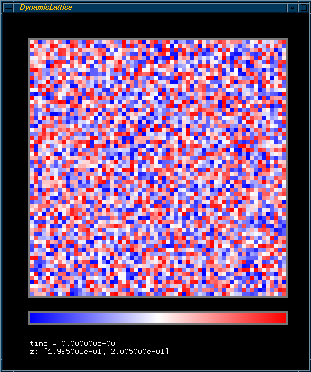
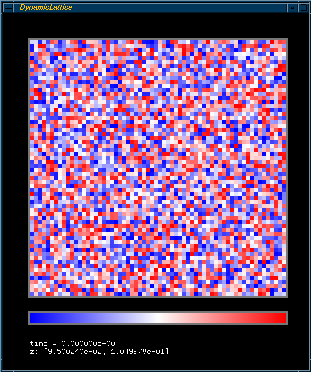
initialize set N = 64 initialize set phi0 = 2.000000e-01 initialize set phi0range = 1.000000e-03 initialize set s0 = 0.100000e+00 initialize set s0range = 0.010000e+00 initialize set theta0 = 0.000000e+00 initialize set theta0range = 0.000000e+00 initialize set rotation = 0.000000e+00 initialize random 321 model zero integrate rk set Na = 50 set Nb = 10 set W0 = 1.400000e-01 set W1 = 1.000000e+00 set chi0 = 5.882353e-04 set chi1 = 1.000000e+00 set T = 8.000000e+00 set dx = 5.000000e-01 set checkbounds = true
Figures are phi, s, and sometimes the Schlieren pattern (for polarizers aligned horizontally and vertically).


t=0 0.1995 < phi < 0.2005 0.095 < s < 0.105
Random initial condition
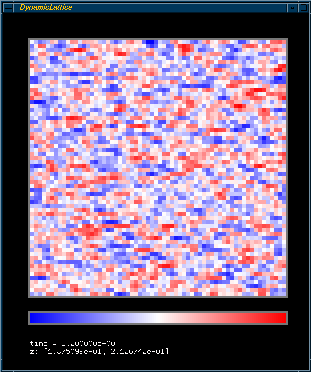
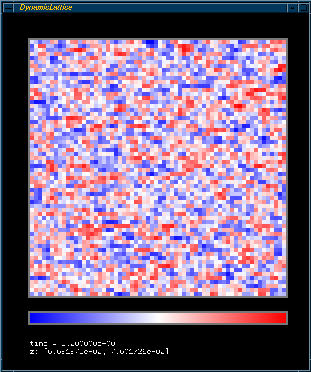
t=3.2 0.188 < phi < 0.212 0.067 < s < 0.076
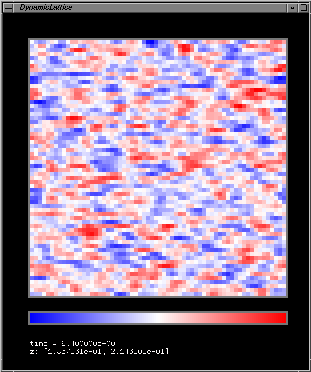
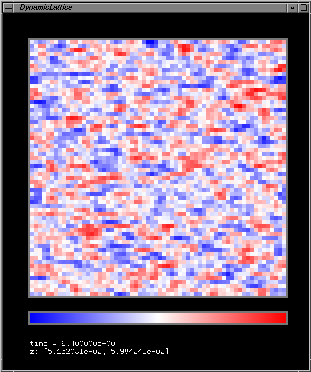
t=6.4 0.186 < phi < 0.214 0.052 < s < 0.060
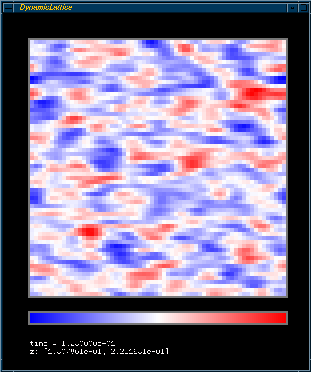

t=12.8 0.181 < phi < 0.223 0.034 < s < 0.041
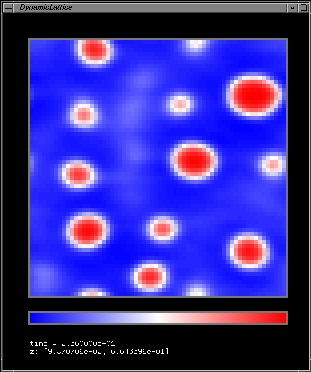
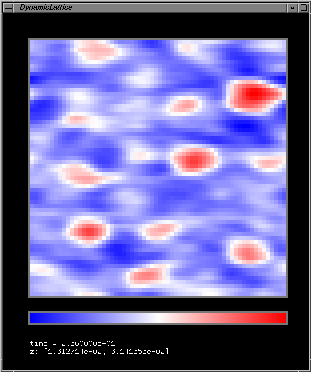
t=25.6 0.099 < phi < 0.664 0.013 < s < 0.031
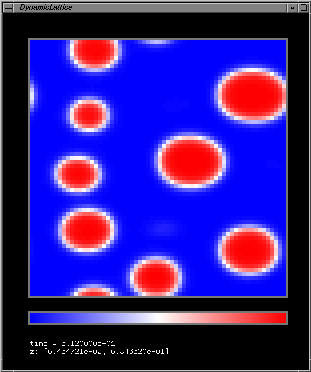
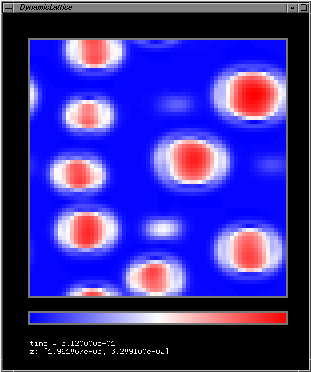
t=51.2 0.065 < phi < 0.684 0.0002 < s < 0.033
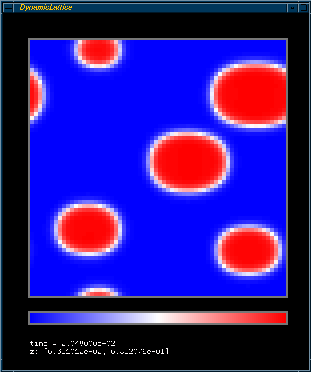
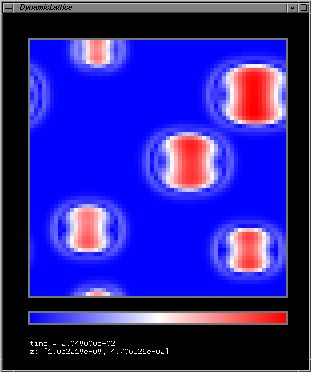
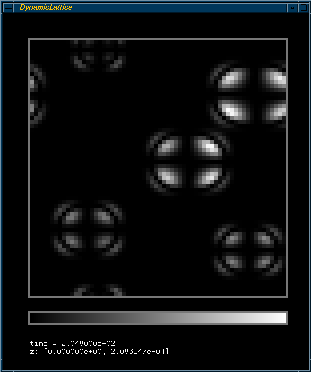
t=204.8 0.063 < phi < 0.683 0 < s < 0.047
The director field is parallel to the x axis, except near the edges of the droplets, where it bends to follow the boundary.

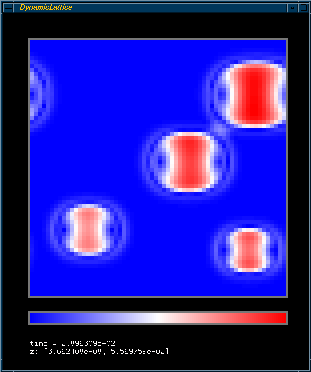
t=289.6 0.058 < phi < 0.684 0 < s < 0.056
The two droplets that are merging still are oriented in the x direction
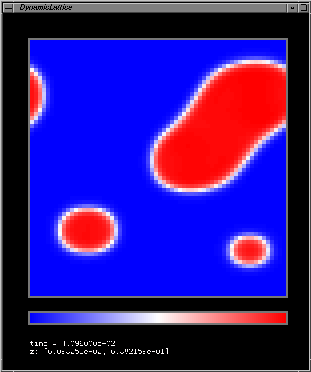
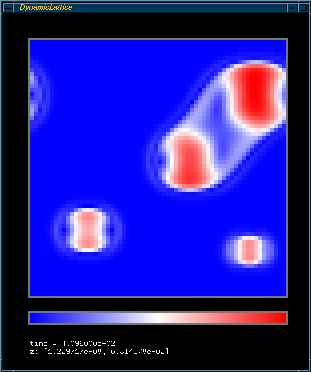
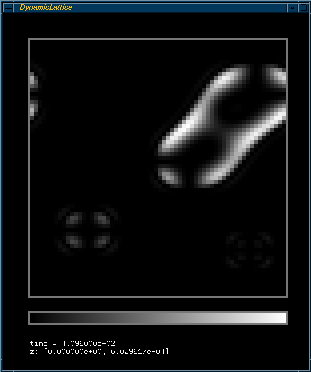
t=409.6 0.061 < phi < 0.688 0 < s < 0.068
The director is still mostly in the x direction, except near the edges.

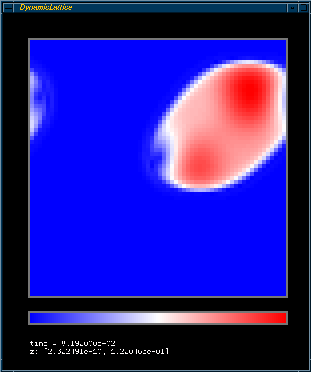
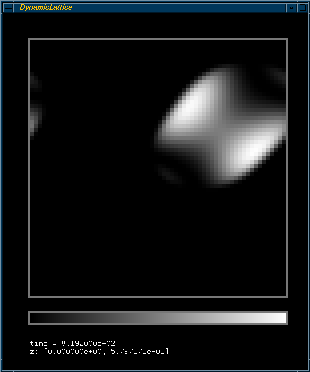
t=819.2 0.059 < phi < 0.718 0 < s < 0.122
The orientation of the merged droplets has shifted to align with the long edges of the drops, except at the ends.
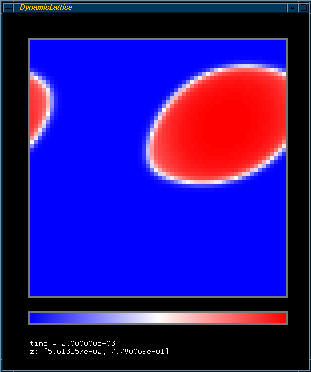
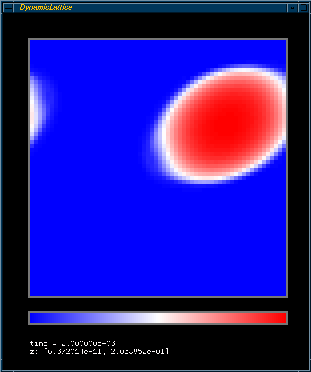
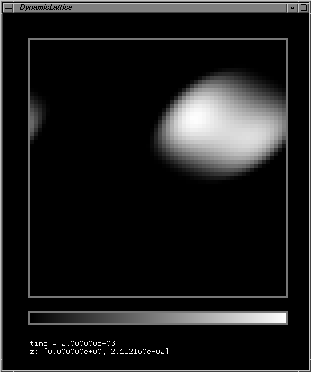
t=2000 0.056 < phi < 0.778 0 < s < 0.206
The droplet is nearly uniformly ordered, but not in the x direction.
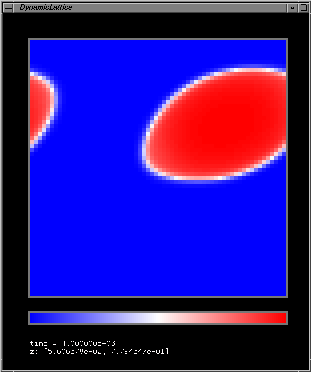
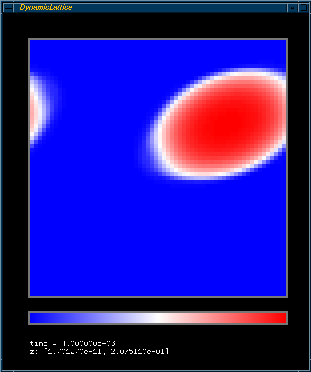
t=4000 0.056 < phi < 0.779 0 < s < 0.208